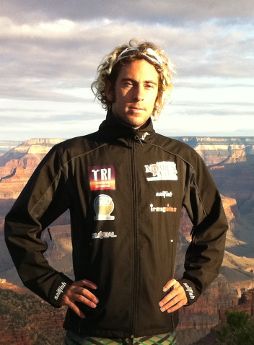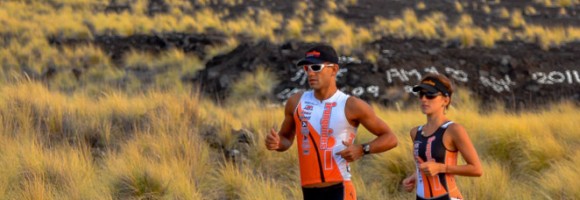 Having discussed the training approach for performance athletes aiming to race competitively in Kona, I want to now take a look at possible nutritional strategies that could be used on race day.
Having discussed the training approach for performance athletes aiming to race competitively in Kona, I want to now take a look at possible nutritional strategies that could be used on race day.
Nutrition for race day is a very controversial issue—and for good reason, as there is simply no one formula that works for all athletes: we are all different and have a body adapted to eating and drinking a certain way.
At the very top of the field, intensity levels are right on the edge and the fuelling needed for this is very specific. Experts in nutrition are starting to believe more and more that in Ironman the very best maybe not the best athletes, but certainly the best at taking sugar onboard as fuel without any ill effect.
Past Ironman World Champions such as Normann Stadler have been quoted as taking on board 32 energy gels during the bike, something that would make most athletes throw up without question, yet Stadler was able to metabolise this at intensity and perform to his best as a result.
Chris McCormack had his breakthrough race in Kona after falling victim to throwing up early in the race unable to take on his planned NUTRITION; after being instructed to consume only Coke, his race turned around and he finally had a solid performance in Kona.
Taking these things into account and working with pro athletes racing at this level, I think it is clear that sugar is crucial to race well but the complexity and timing are also very important. We have heard for years that the race should see us move from complex carbs to simple carbs as the race goes on, as this is easier for our system to cope with and prevents sickness. However, we see far too many people using this system suffer so it is time to try something else.
If we look at the race and the relative intensity then we can see that the most intense parts of the race are likely to be the swim and first hour of the bike—especially at the front of the race there is very little pacing. Rather than taking on complex carbs at this point, I believe it would be better to take on board simple sugars such as Coke to fuel this intensity effectively. As the race moves on, the intensity declines and this is the time to start thinking about more complex carbs and fuelling for later in the race.
So looking at a fuel plan for the day, after the swim:
BIKE: 1st hour – Coke, no solid food at this point
BIKE: 2nd and 3rd hours – this is the time to move to more traditional sports drinks/bars for fuel.
BIKE: after 3 hours – at this point fatigue will be affecting intensity and we should be looking at caffeine and a meal replacement drink which will be absorbed more readily now at a lower intensity. A product like Ensure Plus works well here.
RUN: the run in Kona is always going to start out fast and the last hour of the bike should reflect this—move back to simple sugar and stay away from solid food.
The first 10 miles are going to be fast and high intensity, along with a sudden increase in heat now the wind resistance from riding is gone. The focus for the first 10 miles is on cooling and hydration along with getting in simple sugar from an energy drink or Coke.
After 10 miles, the athletes hit Palani Hill and move away from the crowds into the lonely lava fields, a very depressing time as this is when major fatigue is going to hit the body! Taking some caffeine 1 mile before this point is going to help maintain a positive attitude at a time when many athletes lose themselves. This caffeine can come from Coke, Red Bull, or simple caffeine tablets, but the drinks will also give a sugar kick which is a big help.
RUN: Second half
The final half of the run is all about who falls apart the least. Intensity is way down at this point so more comes carbs can be effectively taken on: some solid food, jelly babies or gels work well at this point. We tend to see athletes grabbing for Coke at this stage and running on fumes between aid stations—with more complex carbs at this point a more stable finish to the race may be achieved.
By Alun ‘Woody’ Woodward – ironguides.net
–
Train with ironguides!
Personalized Online Coaching: Starting at USD190/month
Monthly Training plans (for all levels, or focused on one discipline): Only USD39/months
Event based training plans:
Sprint Distance (USD45 for 8-week plan)
Olympic Distance (USD65 for 12 week plan)
Half Ironman (R$95 for 16-week plan)
Ironman (USD145 for 20-week plan)
X-Terra (USD65 for 12-week plan)
Running Plans (10k, 21k and 42k – starting at USD40)


Recent Comments